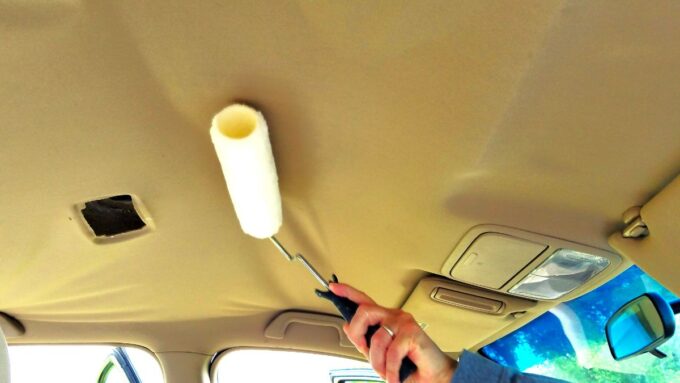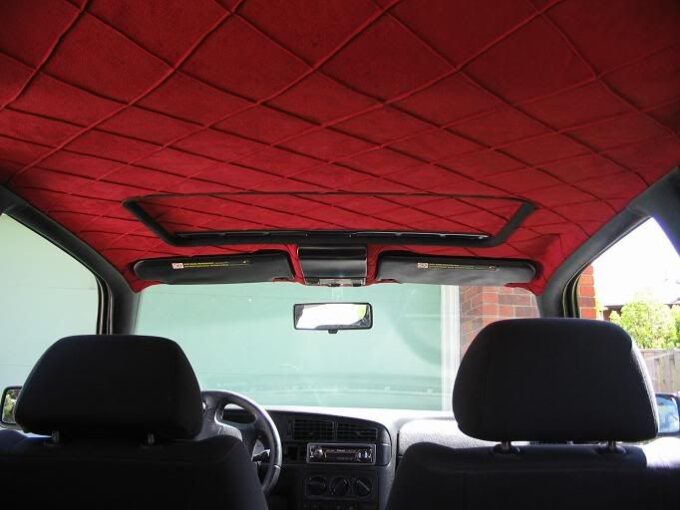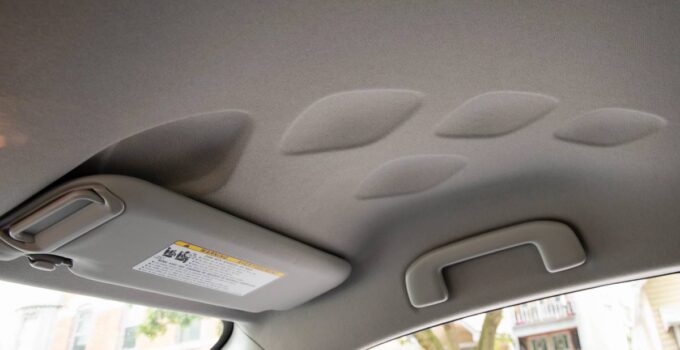Once you notice the headliners in your car are peeling off, it can be quite frustrating to sit inside, as it makes the whole interior quite ugly. Moreover, once the process starts, it keeps going – there is no stopping until you decide to change the upholstery. This can be done in various ways, and most people like to try it out themselves. But, the question arises about where to find the quality materials for this.
To make sure the work is done with quality, and that it doesn’t start to peel off again, it is advisable to find quality adhesive. Before we continue discussing what quality adhesive is, and where can you find it, a very important question you should have an answer to is: “Why are the headliners peeling off?”
The material covering the roof of the car is made up of three parts. The problem arises when the central part, the sponge, wears out. The main factor is age. If the car is parked in the sun, it significantly accelerates the deterioration of the sponge, then it is not surprising when the headliner peels off on a car that is less than 10 years old. Such a sponge turns into dust with every touch, so gluing the old material is out of the question.
So, how does the preparation process look?

Source: practicalmechanic.com
First, we should thoroughly clean each roof of old material, then apply glue to both surfaces (canvas and upholstery). When the glue dries, we carefully glue the canvas to the upholstery, leaving no air pockets or imprints. After a few hours, the glue dries completely and then we put the headliners back in the car.
Over time, and especially under the influence of high temperatures, the coating on the roof covering can peel off, as was mentioned earlier, and if it is a frequent car model, replacing the roof covering can be quick and relatively inexpensive.
In the factory, the upholstery is pressed on the lining under high pressure on a mechanical press, and there are usually no problems with it, except that the spongy insulation that is part of the upholstery rots and deteriorates over time, and then it can fall, and for safety reasons, such a car cannot pass technical inspection.
Or, it bursts in a crash when the curtain airbags installed on the roof are activated.
Also, what many people do not know is that the upholstery should not be chemically cleaned because this can destroy it, and it is also damaged by extremely high temperatures in the interior, so in the summer it is good to always leave the windows slightly open when the car is in the sun.
In brief, when you choose to go to a professional to repair the headliners, you’ll be able to choose between several classic colors and types of sponge and upholstery as a base, but most opt for the standard light gray color, which is the majority of factory linings, or possibly black. If you choose to do it yourself, Midwest Fabrics have quite a lot of upholstery choices you can choose from, as well as adhesive.
Generally, adhesives can be found both in the local shops selling specialized materials for this kind of work, as the one we’ve mentioned earlier in the text, or online. Both options have their advantages and disadvantages. You may be able to find some quality adhesive that may not be available in a place where you live, online. On the other hand, buying in local shops gives a guarantee the product is not damaged during transport, for example.
And since you’re going to be doing some complicated DIY work, handling the adhesive of your choice properly is also very important. Here are some tips:
1. Correct use
The most important tip is simple. Always follow the instructions on the package. This primarily refers to the method of application, the amount of material, or the time required for the adhesive to harden.
2. Protective equipment
To work with any type of adhesive you must have protective equipment. You will learn on each information leaflet that the material must not come into contact with eyes and skin. Safety glasses and gloves should therefore be taken for granted. Another option is a long-sleeved shirt or work shield.
3. Removing the adhesive from the headliners
Removing the adhesive can be difficult – first of all you need to know what product was used to join the material. Then you can use e.g. degreaser, acetone, or another readily available agent. Some putty treatments can be gently sanded away, while others require you to visit a specialty store where special removers and solvents are available.
Finally, how to choose the right one?

Source: design.superiorapch.edu.ec
As was mentioned earlier, going to the local car parts shop that usually sells these adhesives and asking for recommendations is the smartest option. There you’ll be able to gather all information about the content of each adhesive, as not all of them are made the same.
The best choice is the one that can endure very high temperatures, and the low ones too. You should keep in mind that those containing rubber are not a good idea, since they are not resistant to high temperatures.
Generally, if you want to choose the best one, you should first be familiar with what is the material used for your headliners, is it foam or something else, based on this you’ll know which adhesive will be the best in terms of quality.
Wrapping up

Once you got everything you need, it’s time to do some DIY. Make sure you don’t just choose a random day for this, because adhesive will work best when the temperatures outside are around 70 F. And take your time. Hurrying can only result in a mistake.







